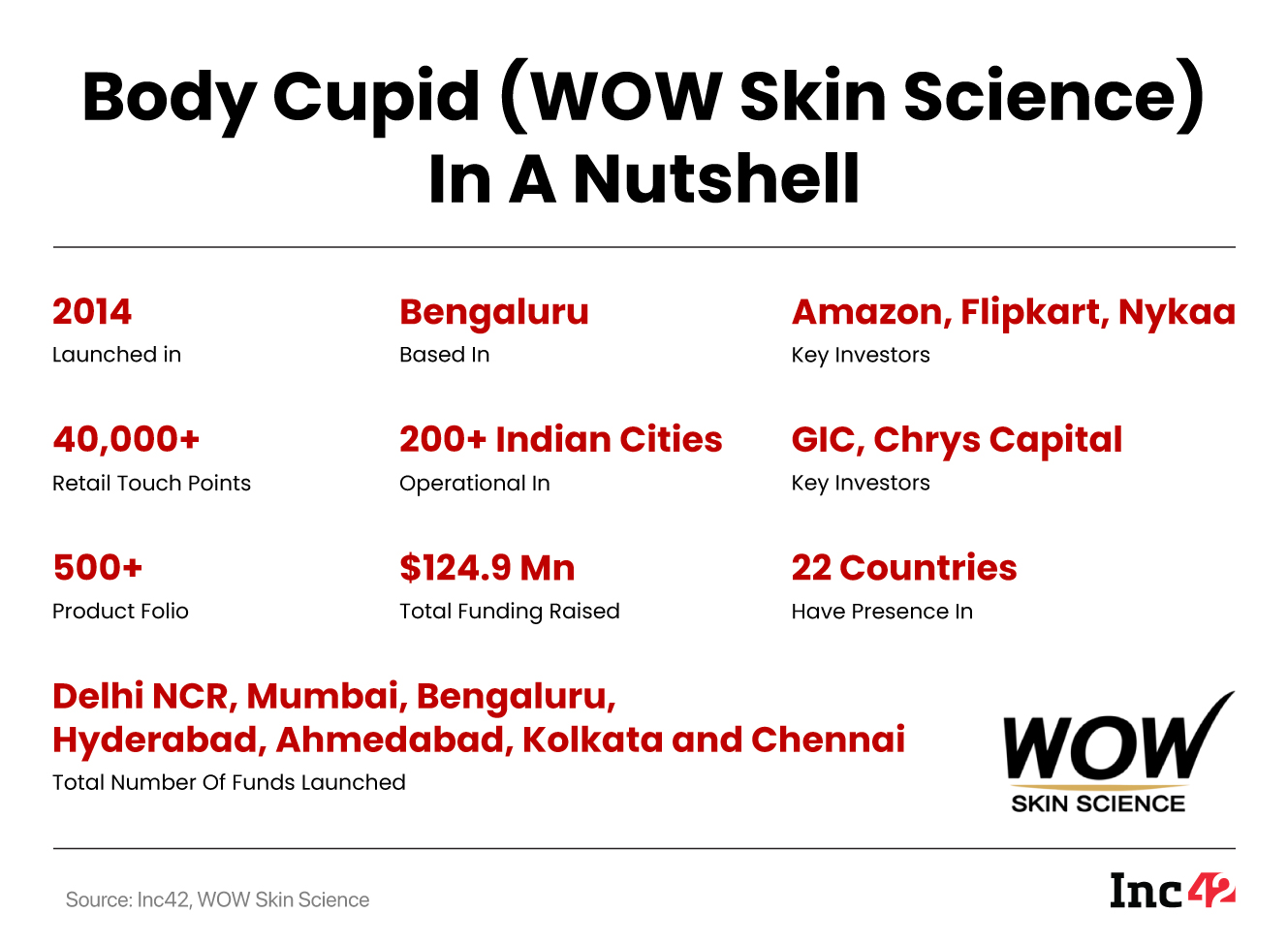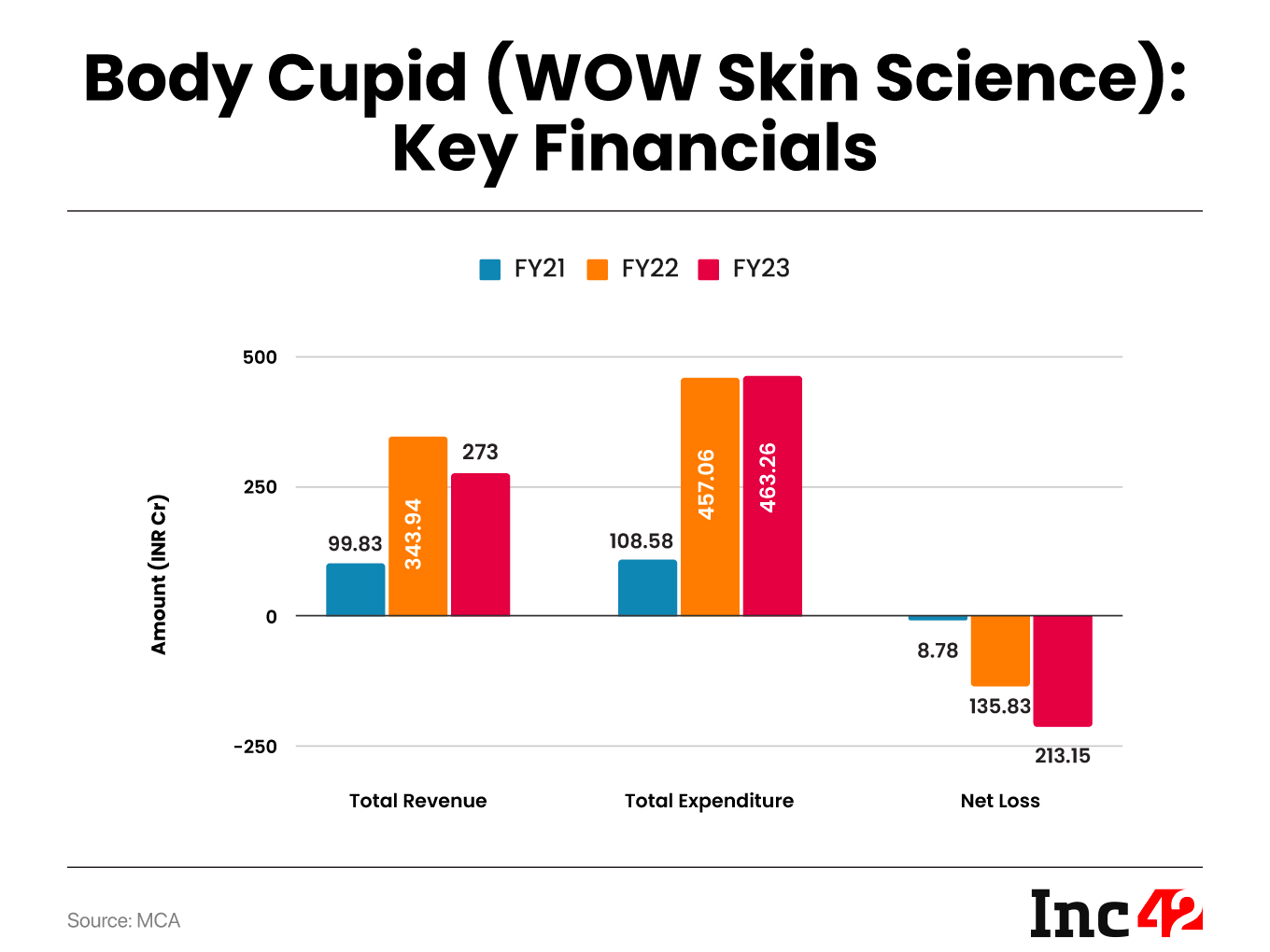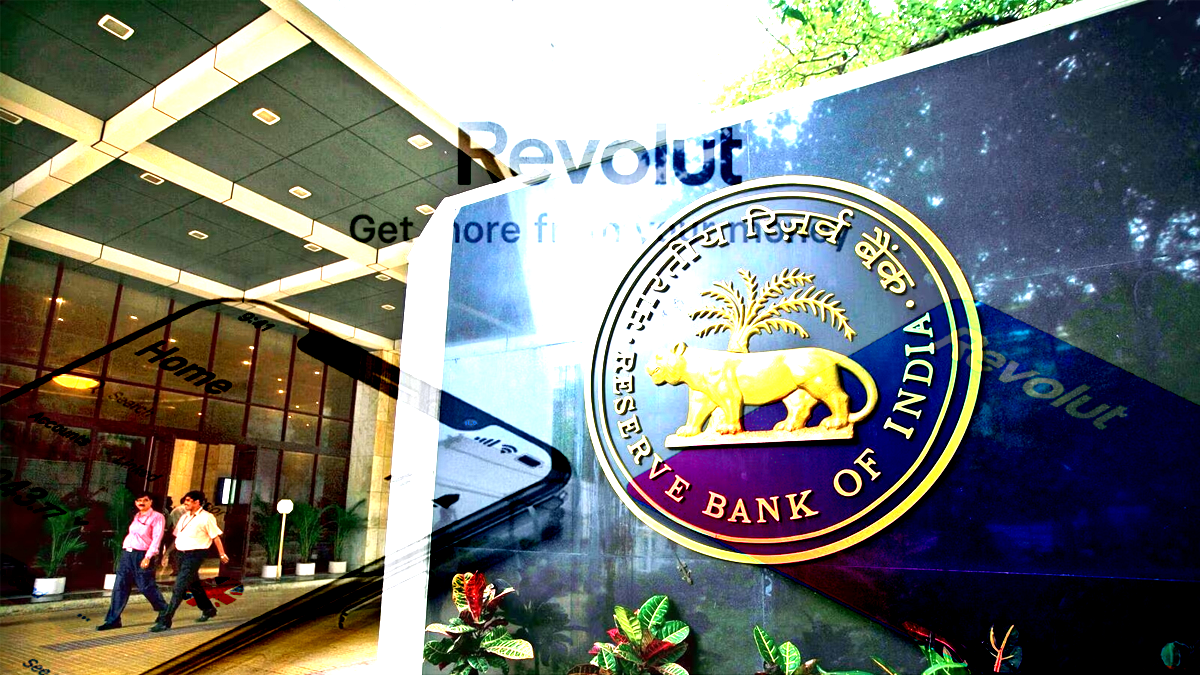Startup Stories
WOW Skin Science’s Blueprint For Breaking Through In The $783 Bn BPC Segment

The founders of WOW Skin Science forayed into the BPC segment when it was dominated by deep-pocketed big players like HUL, Himalaya, Lotus, VLCC, and Biotique
Cofounder Manish Chowdhary said that during his journey in building a brand, he embraced aggressive pivoting, not just quarterly but as frequently as every 15 days to a month
From Chowdhary’s spectacle, the company is on track for double-digit growth and achieving INR 1,000 Cr revenue in the short term
Behind the glimmer and shimmer of the most polished brands that we see every day are often the stories whose chapters were once written with sweating blood. And it is not every day that we tend to learn about the struggles of the founders in forging such brands, especially in the era of easy access to capital.
We believe that such stories should come to the fore to fuel the spirits of founders and aspiring entrepreneurs during the direst of times.
Similar is the narrative of Manish Chowdhary, now the cofounder of WOW Skin Science, whose retail electronics business incurred a loss of $1 Mn due to unsold inventory. Much to his chagrin, he had to call it quits, but only to start afresh.
Some may see it as a failure, however, had it not been for the lost $1 Mn, the country would have been short of a soonicorn today.
Well, after having traded his electronics business for key learnings in the school of hard knocks, Chowdhary, along with his brother Karan and two friends Arvind Sokke and Ashwin Sokke, decided to wade into uncharted territories — the Indian beauty and personal care (BPC) segment.
After a year of research and pilots, the team, spearheaded by Chowdhary, incorporated Fit&Glow in 2014 and launched its first brand WOW.
The founders made the foray into the segment at a time when it was dominated by deep-pocketed big players like HUL, Patanjali, Himalaya, Lotus, VLCC, and Biotique, just to count a few names.
So, what chances of survival did a bunch of Davids (the founding team) have in front of the Goliaths in command of the industry?
“We realised that despite the presence of giants, the Indian beauty and personal care space was highly under-penetrated, leaving plenty of opportunity for young companies like us to enter the market and provide consumers with outstanding products and a compelling story,” Chowdhary reminisced during a fireside discussion at Inc42’s recently held D2C Summit.
Not sure if the founders deeply studied the market data back then, but they ended up tapping into the Indian beauty and personal care market at the right time.
For context, the Indian beauty and personal care segment was a $26.3 Bn market opportunity in 2022 and is expected to reach $38 Bn by 2028. On a global scale, the segment is expected to touch $783.49 Bn by 2028.
Nine years on, the company, which is now registered as Body Cupid Private Limited, fosters four brands — WOW Skin Science (its flagship brand), WOW Life Science, Body Cupid, and Nature Derma — and has a portfolio of over 500 products.

Today, the BPC brand has a presence in more than 200 Indian cities and has expanded itself to 22 countries, with a focus on the US and South Asia as anchor markets. In 2022, it also expanded to the UAE market and in 2023 to Saudi Arabia.
“We are also seeing robust growth in the UAE. Saudi is a big opportunity and we are focussing our efforts to build our presence there,” Chowdhary said in an exclusive conversation with Inc42.
The new-age D2C brand today has its eyes fixed on achieving INR 1,000 Cr in revenue, and according to Chowdhary, the company is well on track for this.
Notably, the INR 1,000 Cr revenue journey seems to be a long one from where the company is standing right now. According to the company’s MCA filings, it reported a total income of INR 273.01 Cr in FY23 against INR 343. 94 Cr a fiscal year ago.

The slump in revenues could largely be attributed to the relatively tougher 2022 which was headlined by adverse market conditions, rising inflation and curbing of discretionary spending by users.
On top of that, renewed competition from incumbents as well as new entrants, which also included deep-pocketed conglomerates, could have also weighed heavily on WOW Skin Science.
Additionally, despite offering frequent discounts, the beauty brand also faced headwinds in FY23 as demand for premium products saw an uptick over the course of last year – a segment which offers higher margins.
However, according to Chowdhary, this is the part that many fail to understand as, after a point, the trajectory of business changes and challenges increase for founders.
“In a startup’s journey, whether it’s going from 1 to 10, 10 to 100, or 100 to 500, founders are bound to encounter obstacles at every milestone. However, it’s precisely at these times that they mustn’t give up. They need to maintain patience, recalibrate, and continue innovating to stay competitive,” the cofounder said.
WOW Skin Science’s Scaling Strategies
Currently, there are over 5,500 skincare companies in India, and more brands are realising the untapped potential in this sector, which is keeping founders on their toes.
According to Chowdhary, most founders can successfully launch a brand from zero to one, but it’s when they attempt to go beyond that point that they encounter challenges and hit mental barriers.
This is probably why 45% of new business startups don’t survive the fifth year, and 65% of new startups fail during the first 10 years.
For a business model like Body Cupid, where minimum order quantities (MOQs) are small, it’s relatively easier to experiment with products based on anticipated customer needs. In this context, it is extremely crucial to tap on the market beats and consumer interests and pivot whenever it feels necessary.
During his journey, Chowdhary asserted, he embraced aggressive pivoting, not just quarterly but as frequently as every 15 days to a month. For instance, WOW initially started as a dietary supplement brand in 2014 but within a year, it quickly recognised a shift in consumer preferences toward skin and haircare needs.
Before 2016 hit, not only did the company meet the new demands of consumers for herbal, paraben and sulfate-free products, but it also made these products accessible at an affordable price range.
Speaking with Inc42, Chowdhary gave deep insights into his building and scaling strategies, which are as follows:
Brand Building Is Paramount
For Chowdhary, the core value proposition for WOW Skin Science and other brands is online – everything, including innovations, starts with ecommerce or digital platforms. However, unlike a few years ago, the competition has intensified, which has made it challenging for D2C brands to retain customers, thereby spiking their customer acquisition costs.
“In the last 18 months, we have been recalibrating our story, with a significant focus on brand marketing rather than performance marketing. After all, a brand’s products are manufactured in a factory, but brands are built in the minds of consumers,” he added.
While digital marketing can drive consumer reach faster, the ultimate goal is to build a brand with lasting impact and a high repeat-customer ratio. Over the last three years, market dynamics have changed significantly, compelling brands like WOW Skin Science to adjust their strategies, with supply chain and distribution being the primary challenges.
Chowdhary also acknowledges that despite their focus over the past two years, they have yet to streamline their branding fully. However, over the next 12-18 months, the team has planned substantial brand-building activities, although he didn’t share the specifics.
Celebrities Don’t Guarantee Success
One trend, which has emerged in the last few years, is the growing collaboration between celebrities and D2C brands. According to the WOW cofounder, it’s a common belief that onboarding celebrities increases brand adoption, but the reality is that one can not be too sure about it.
After experimenting with celebrity-based endorsements and campaigns for 24 months, he realised that modern consumers prioritise influencers and relatability over traditional celebrity endorsements.
He advises brands to incorporate a few campaigns without celebrities and then reintroduce celebrity endorsements based on consumer responses. However, the timing should be flexible and based on consumer feedback.
Moreover, the longevity of celebrity endorsements can be uncertain, as celebrities have a limited shelf life. The strategy should be to organically acquire customers based on the brand’s products, story, and roots.
“Returning to basic strategies, we will soon launch three new campaigns without celebrities, focussing on showcasing the true essence of our brand. However, the approach varies depending on the category,” he added.
Pricing Is Crucial
Finding the right pricing balance is paramount for a D2C brand. High competition demands startups to keep a competitive yet affordable pricing.
According to Chowdhary, overpricing can deter consumers, while underpricing can increase the time and cost required to achieve desired results. Access to analytics and data science enables startups to determine the best times to adjust pricing based on market dynamics.
“We’ve witnessed this in action. In today’s era, if you sell on Amazon, you can experiment with pricing by gradually increasing or decreasing it until you find the right match,” he added.
He also emphasised the importance of data collection, highlighting that startups now have access to robust analytics and data science to determine the ideal times to adjust pricing based on market intensity.
“Less Is More” In Critical Situations
Regardless of the category, innovation is crucial, whether for a new-age company or an established organisation. However, there are limits to how much innovation can be introduced in sectors like beauty and skincare.
Customers who have found a product that serves their skincare regime may be hesitant to switch to another. Differentiation is crucial and striking the right balance between innovation and product stability is essential.
“In our case, we focussed on a core set of ingredients, ensuring that even as we expanded our product range, it wouldn’t confuse consumers. Remember, it’s better to be highly focussed on innovation, support those innovations for three to four years, and then reinvent along the way. Ultimately, ‘less is more’ often proves more effective,” he added.
Packaging Will Set You Apart
For any D2C brand, packaging plays a huge role in creating the first positive impression and the initial excitement for the product. Many brands are choosing different ways to offer products in a more personalised and customised packaging. Chowdhary also experimented with different strategies to differentiate themselves in a saturated market, including opting for unique packaging.
For example, the founders discovered that gold, in particular, captured consumers’ attention for a few extra seconds. So, while most products in India are packaged in white, WOW chose amber and gold packaging to stand out.
Don’t Rush Into Offline Expansion
Although D2C brands are increasingly considering omnichannel strategies, Chowdhary advises caution when expanding offline. He suggests that a brand should wait until it achieves INR 100 Cr in revenue within two to three years of online operations before contemplating offline expansion.
While online offers flexibility in growth strategy, offline requires a substantial commitment. Brands should view offline as just another channel to gain repeat customers, allowing founders to track “top of mind” metrics quarter by quarter. Only when the brand is well-established digitally should offline expansion be considered.
“It may seem appealing in the short term due to initial sales, but unsold stock can negatively impact profitability. This is a story that needs to be added at the right time and revenue,” he added.
What’s Next For WOW Skin
According to an Inc42 report, the beauty and personal care segment is projected to be a $28 Bn market opportunity by 2030. In 2022, the segment was a $4 Bn market only.
This market opportunity has kept many players on their toes. While some well-funded entities have managed to pour substantial resources into marketing and branding efforts, leading to increased revenues and eventual profitability, many others are saddled with losses.
Mamaearth reported profitability in FY22, boasting a net profit of INR 19.8 Cr on a standalone basis, compared to a net loss of INR 1,332.2 Cr in FY21.
Meanwhile, companies like The Ayurveda Company, Purplle, and mCaffeine, among others, have continued to grapple with mounting losses. Interestingly, WOW Skin Science last saw profits in FY20.
Given the current landscape, it’s imperative for startups to maintain a steady flow of backup funding while concurrently trimming expenses. WOW Skin Science recently secured $48 Mn from Singapore’s GIC in June 2022, adding to a total funding of $125 Mn across multiple rounds to date.
In light of FY23 financials, Chowdhary has continued to remain optimistic. He places his faith in innovation and anticipates that growth will be propelled by both national and international sales in the near future.
As he shared with Inc42, apart from focussing on growing the top line and profitability of the India business, the company will restart its US business. Also, the cofounder is looking at investing heavily in digital capabilities, using AI in marketing, data analytics, and implementing SAP for future readiness.
Lastly, from Chowdhary’s spectacle, the company is on track for double-digit growth and has eyes on achieving INR 1,000 Cr revenue in the short term.
Startup Stories
Byju’s partially pays March salaries, pending February payouts.

Byju’s, a prominent player in the edtech industry, has encountered financial challenges resulting in delayed salary payments for its employees. As of April 20, the company has only disbursed a portion of March salaries, attributing the delay to a severe cash crunch. Despite earlier assurances from the company’s management that salaries for March would be paid by April 18, many mid-senior employees have reported receiving only 50% of their March salaries. Additionally, February salaries remain unpaid for a significant number of employees, further exacerbating the situation.
Founder and CEO, Byju Raveendran, has resorted to raising personal debt against his stakes in the company to facilitate salary payments. This underscores the severity of the financial challenges facing Byju’s and highlights the lengths to which Raveendran is willing to go to address the issue.
Employee testimonies reveal the extent of the salary delays, with one employee stating that they received only 50% of their March salary on April 20, with 80% of their February salary still pending. Another concerning aspect is the reported disparity between junior and senior employees, with junior staff receiving full salary payments while top management has gone without salaries for the past two months.
Byju’s has acknowledged the delay in salary payments but has not provided a detailed explanation for the situation. A company spokesperson declined to comment on queries from ET regarding the matter. In an email sent to employees on April 8, the management team expressed regret over the delay and attributed it to the inability to secure approval to access funds from a rights issue. The delay has been further compounded by actions from foreign investors, hindering the company’s access to necessary funds.
This revelation follows a previous report by ET on April 1, which highlighted Byju’s decision to delay salary payments due to constraints imposed by warring investors, limiting the company’s access to funds through a rights issue. The ongoing dispute with investors, including Dutch investor Prosus, has added to Byju’s financial woes and has led to further delays in resolving the issue.
In a separate development, Byju’s India chief executive, Arjun Mohan, announced his departure from the company in mid-April, just six months after assuming the role. This unexpected move prompted founder Byju Raveendran to take on the responsibility of overseeing day-to-day operations of the company’s India business, housed under Think & Learn, marking a significant shift in leadership.
Amidst these challenges, Byju’s is embroiled in a legal battle with a group of investors led by Prosus, who are seeking to block a rights issue and the removal of Byju Raveendran as CEO. The company has also initiated arbitration proceedings to address the dispute and find a resolution.
The rights issue undertaken by Byju’s is significant, as it is being offered at a staggering 99% discount to the company’s peak valuation of $22 billion. This steep discount has implications for investors who choose not to participate in the funding, potentially resulting in a significant dilution of their shareholding post-completion of the rights issue.
The unfolding events at Byju’s underscore the challenges facing the edtech giant as it navigates financial constraints, leadership transitions, and legal disputes. The company’s ability to address these issues effectively will determine its future trajectory and its ability to maintain its position in the competitive edtech landscape.
Startup Stories
Revolut India receives provisional approval for PPI license from RBI

Revolut India, a neobank backed by Tiger Global and Softbank, has secured an in-principle approval from the Reserve Bank of India (RBI) for issuing Prepaid Payment Instruments (PPI), encompassing prepaid cards and wallets. CEO Paroma Chatterjee shared this development in a LinkedIn post on Friday. This approval complements Revolut India’s existing licenses from the RBI, which allow it to function as a Category-II Authorised Money Exchange Dealer (AD II), enabling the issuance of multi-currency forex cards and cross-border remittance services.
Chatterjee emphasized the significance of this milestone, highlighting the opportunity it presents to provide Indian consumers with both international and domestic payment solutions on a unified platform. Revolut, Europe’s largest neobank, entered the Indian market in 2021 with aspirations to disrupt the domestic payments sector. The RBI’s approval is expected to bolster Revolut’s position as a key player in this domain.
Prepaid Payment Instruments (PPIs) are payment tools that utilize stored monetary value, including digital wallets, smart cards, or vouchers, for transactions. RBI Governor Shaktikanta Das proposed on April 5, 2024, to allow PPIs to be linked through third-party UPI applications, enabling PPI holders to conduct UPI payments akin to bank account holders.
Chatterjee underscored Revolut’s commitment to full compliance with regulatory requirements, particularly in India, where the neobank has undertaken significant efforts to localize its global tech-stack to adhere to local regulations.
In an interview with ET BFSI, Chatterjee disclosed Revolut’s plans to introduce a comprehensive suite of digital-first money management services for all Indian customers. These services will enable users to manage their finances, including payments and remittances, both domestically and internationally.
The app, currently in use by employees, will be officially launched once the internal testing phase is completed, according to Chatterjee. She also revealed that there are over 175,000 prospective customers on Revolut India’s waitlist, indicating strong interest in the product.
Startup Stories
Postman buys Orbit to extend developer community reach.

Postman, renowned as an API management platform tailored for enterprises, has recently made headlines with its acquisition of Orbit, a pivotal tool in the arsenal of developer companies for nurturing communities across a spectrum of platforms, including Discord, Slack, and GitHub. Although the specifics of the financial transaction remain undisclosed, Postman took to its blog to underline Orbit’s indispensable role in supporting major developer companies in fostering community management and fostering growth over the course of the past four years.
Within the ecosystem of Postman, the integration of Orbit is poised to be transformative, with the Orbit team set to assume a pivotal role in seamlessly embedding community-centric features into the fabric of the Postman Public API Network. This strategic move is aimed at catalyzing dynamic collaboration between content creators and end-users within the network. Postman, boasting a staggering valuation of $5.6 billion, stands as a stalwart in the realm of API collaboration platforms, serving a user base exceeding 30 million developers and 500,000 organizations.
Under the stewardship of Noah Schwartz, a recent addition to the Postman team hailing from Amazon Web Services, the Orbit team is primed to spearhead initiatives aimed at empowering API distributors to broaden the horizons of their communities, optimize API utilization, and solicit direct feedback from users entrenched within the network.
This integration is anticipated to embolden developers to unearth APIs tailored to their unique requirements and foster meaningful engagements with peers to extract maximum value from each API. However, as part of the transitionary phase, Orbit has outlined plans to gradually phase out its existing product and platform over the span of the next 90 days. Commencing July 11, all functionalities will be deactivated, with no provision for the creation of new users or workspaces.
Postman’s strategic maneuver comes on the heels of its triumphant fundraising endeavor in 2021, securing a whopping $225 million in funding. The fundraising round, spearheaded by Insight Partners, witnessed active participation from prominent entities such as Coatue, Bond Capital (helmed by Mary Meeker), and Battery Ventures.
-

 Startup Stories1 year ago
Startup Stories1 year agoWhy Millennials, GenZs Are Riding The Investment Tech Wave In India
-

 Startup Stories1 year ago
Startup Stories1 year agoStartups That Caught Our Eyes In September 2023
-

 Startup Stories1 year ago
Startup Stories1 year agoHow Raaho Is Using Tech To Transform India’s Fragmented Commercial Trucking
-

 Startup Stories1 year ago
Startup Stories1 year agoMeet The 10 Indian Startup Gems In The Indian Jewellery Industry’s Crown
-

 Crptocurrency9 months ago
Crptocurrency9 months agoLither is Making Crypto Safe, Fun, and Profitable for Everyone!
-

 Startup Stories1 year ago
Startup Stories1 year agoHow Volt Money Is Unlocking The Value Of Mutual Funds With Secured Lending
-

 E-commerce1 year ago
E-commerce1 year agoTop Online Couponing Trends To Watch Out For In 2016
-

 Startup Stories1 year ago
Startup Stories1 year agoWhy Moscow-Based Kladana Considers Indian SME Sector As The Next Big Market For Cloud Computing




